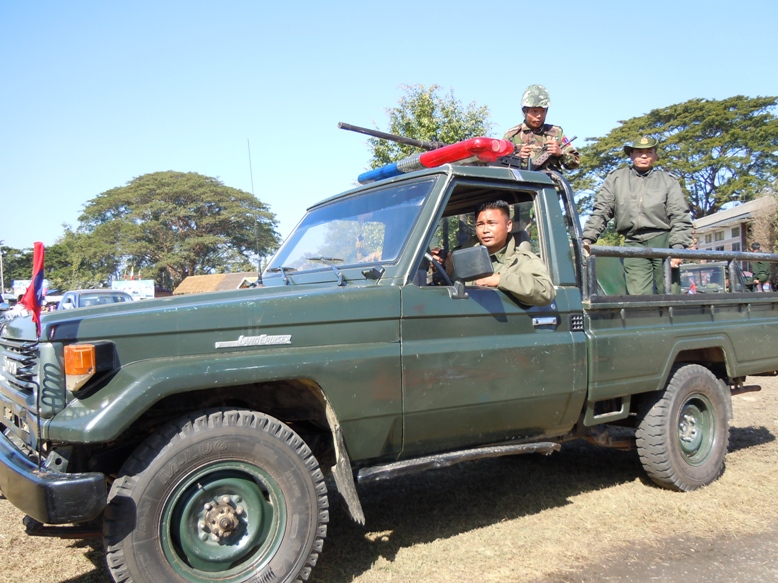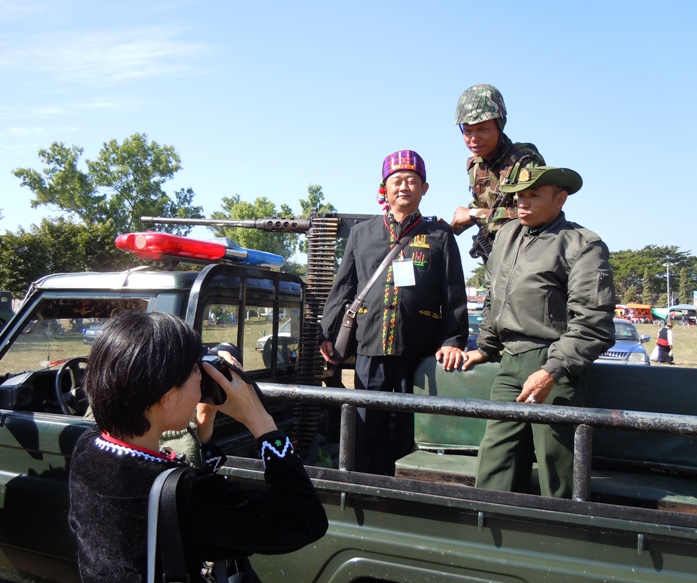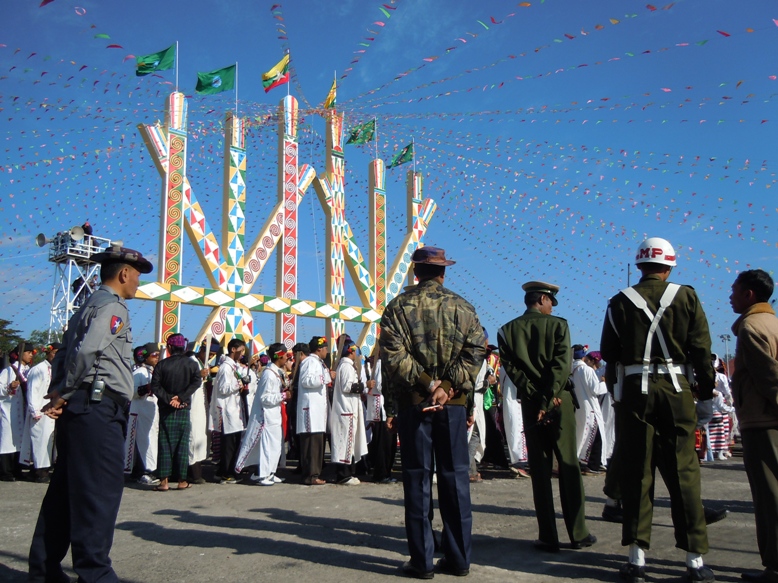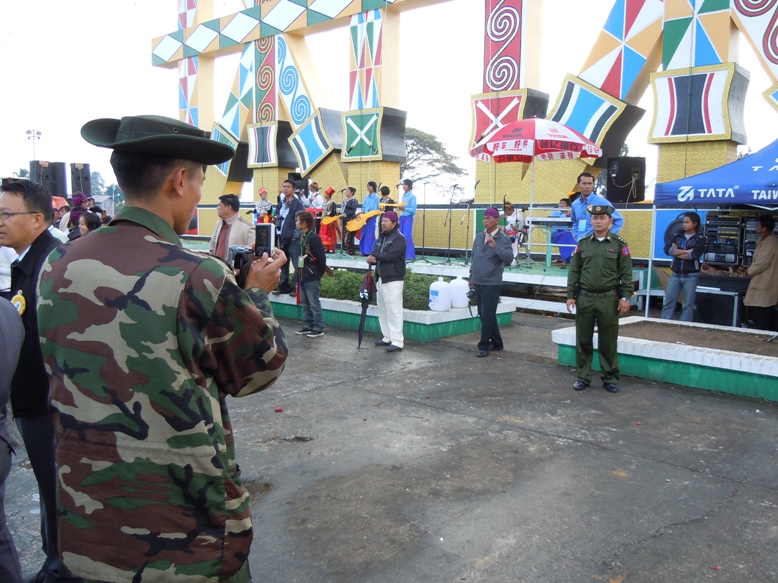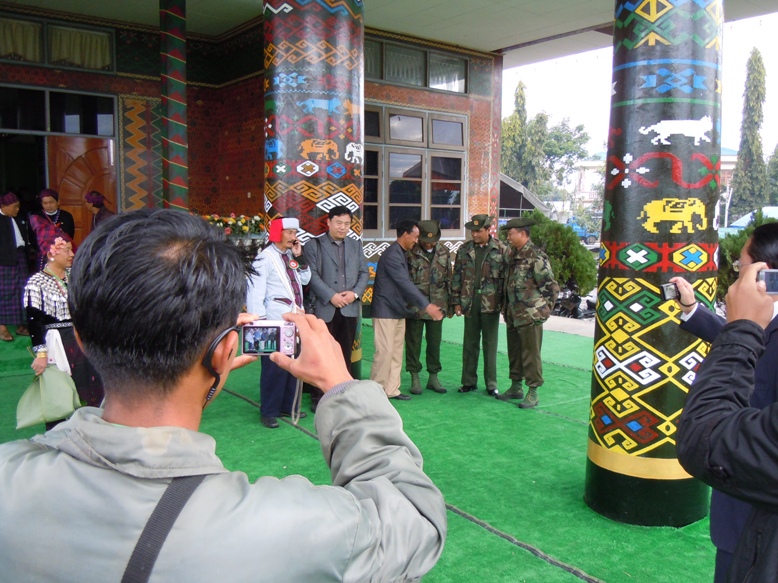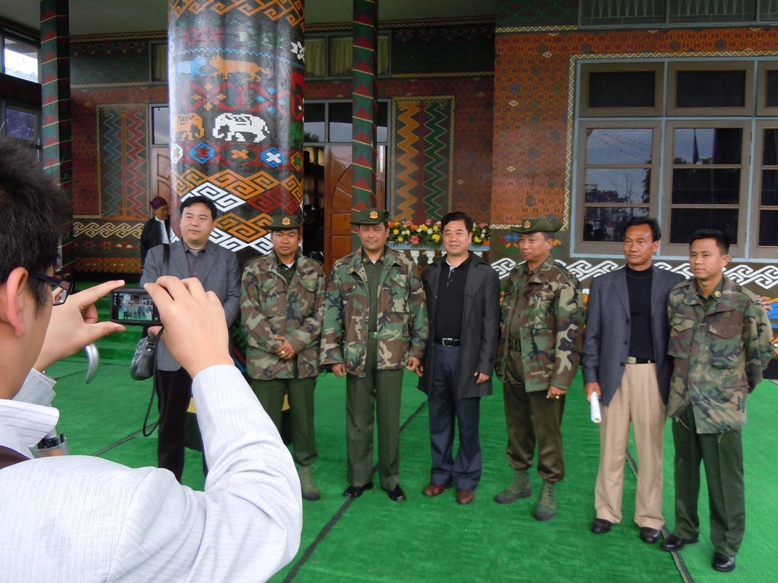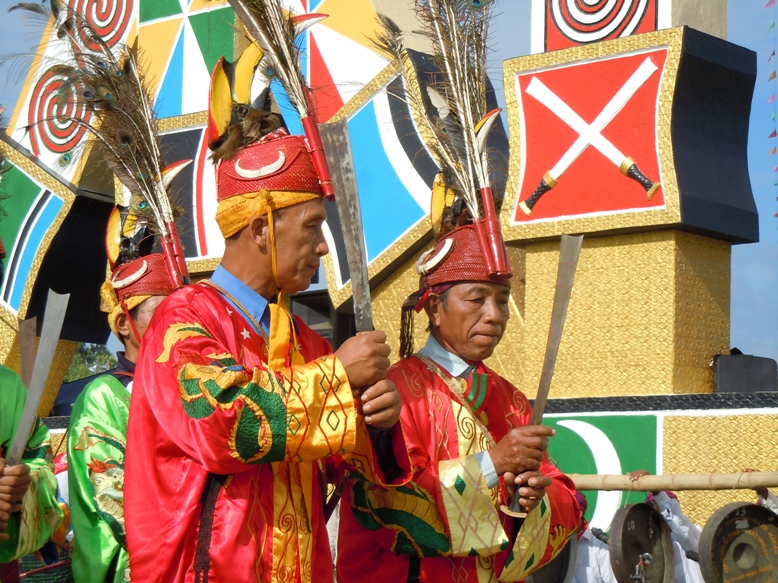A Burmese soldier stands guard at the Kachin State Day Manau Festival, Myitkyina, 10 January 2011.
Long-time New Mandala readers will know that one of my prevailing academic interests is the portion of mainland Southeast Asia where northern Burma runs into northeast India and southwest China. This confluence has seen much inter-ethnic and ideological conflict over the decades and in 2011 the political temperature in northern Burma is rising.
On my recent visit to that part of the world I could appreciate some of the current tension first-hand.
Today there are initial reports that the 17-year Kachin Independence Army/Organisation (KIA/O) ceasefire with the Burmese military has ended. There has been some fighting, with KIO sources indicating that a Burmese Lieutenant Colonel has been killed.
It may prove some time before any further details are available. This resumption of armed hostilities comes right after the celebration of the 50th anniversary of the Kachin “revolution” on 5 February 2011.
Some questions immediately spring to mind: Does this recent flare-up signal the return to war in the Kachin State? What does the relatively new Northern Commander of the Burmese military, Brigadier General Zeyar Aung, have in mind? How ready are the KIA, and their countless sympathisers among the Kachin population of northern Burma, for a new generation of conflict? Does this herald the beginning of more widespread violence that could draw in other ceasefire armies?
Today there are many more questions than answers.
While we wait for answers to some of these questions, this small selection of photographs may help to provide a view of the dominance that the Burmese authorities have exerted in the Kachin State in recent months. These pictures could be profitably compared with an earlier set from January 2008. In 2011, by contrast, there was no uniformed attendance by the Kachin Independence Army although the former New Democratic Army – Kachin (now Border Guard Force) were present in very modest numbers (to provide security for Zahkung Ting Ying who was recently elected to the National Assembly for Kachin State Constituency 4).
From beginning (almost) until the end, the Northern Command of the Burmese military was functionally in-charge of this Kachin Manau festival.
On a cloudy day, the new flag of the Union of Myanmar flies over the Manau poles.
Burmese soldiers in front of a banner that can be translated as: Kachin Peoples’ Cultural Manau Festival. The Burmese soldier closest to camera wears the distinctive shoulder patch of the Northern Command.
Brigadier General Zeyar Aung, Northern Commander of the Burmese Army and Chairman of the Kachin State Peace and Development Council, dances at the Manau festival, 8 January 2011. He is the one swaying forwards, wearing the green jacket with the purple head-dress, surrounded by his security detail and photographers. Zeyar Aung is a former Commander of Light Infantry Division 88 and was also previously the Commandant of the Defence Services Academy.
One component of the extensive security detail that accompanies the Northern Commander when he travels around Myitkyina.
Posing for pictures with the Northern Commander’s security detail.
Burmese Police, Military Police, Soldiers and other security personnel observe the Manau.
A Burmese Army Captain photographs a Burmese Army Captain in front of the Manau poles.
A plain-clothes Burmese security officer (note the ear-piece) photographs Burmese Army officers alongside Chinese visitors.
Burmese Army officers pose for pictures with their new Chinese friends.
The Manau dance leaders pass in front of the Manau poles with their distinctive “crossed swords” emblem. For some more details on the history of the symbol this post from the archives may prove helpful. Crossed swords are, of course, the key symbol of the Kachin Independence Army/Organisation.
 Facebook
Facebook  Twitter
Twitter  Soundcloud
Soundcloud  Youtube
Youtube  Rss
Rss 



